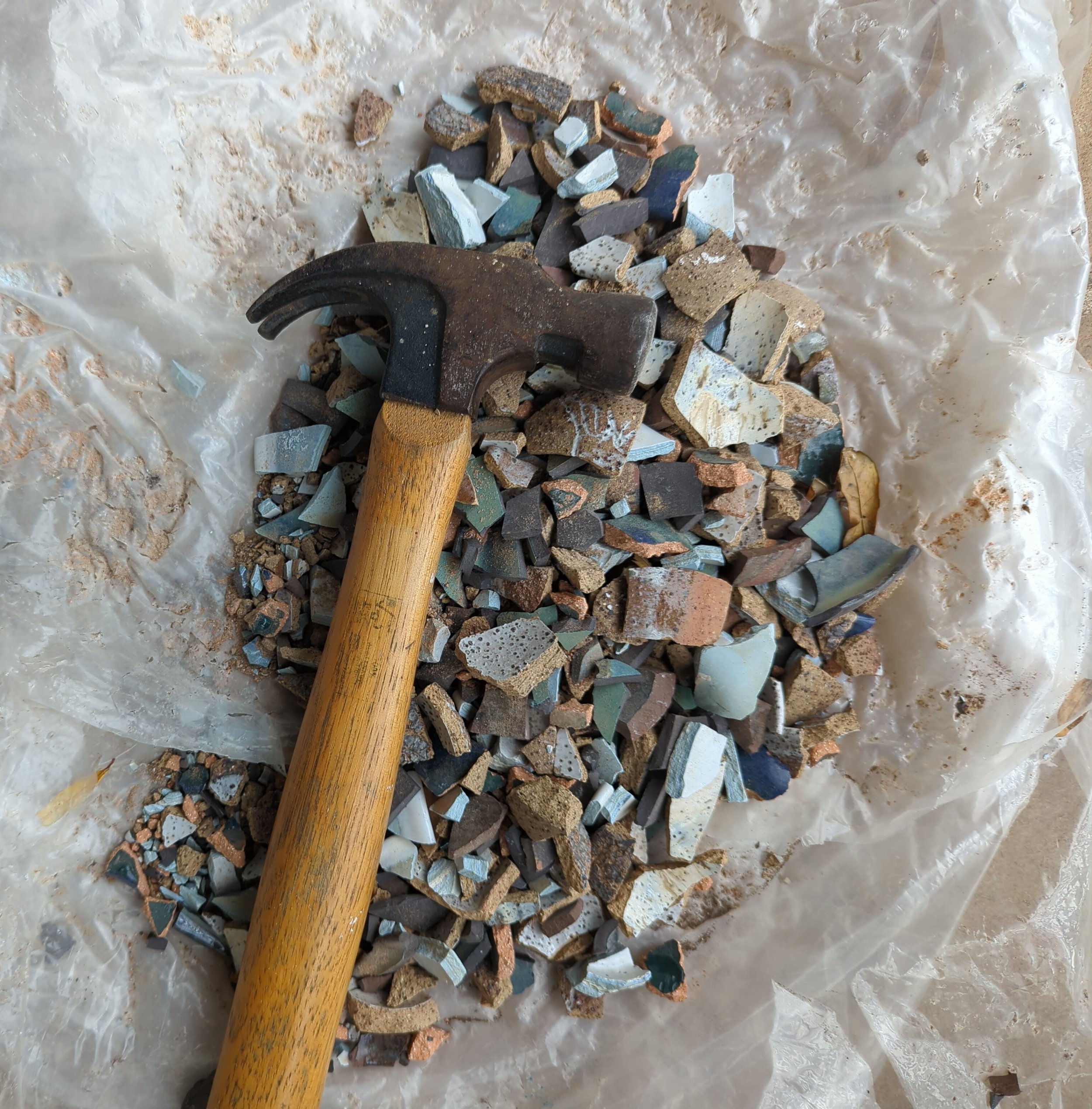Let’s talk sustainable ceramic practices
I started my obsession with all things pottery 3 years ago. My first wheel throwing lesson had me hooked! I believe it is the mindful spinning of the wheel, the tactile earthiness of the clay and the creation of something handmade, that continues to fuel this passion. It is my therapy!
I made some pretty awful pieces in my beginner days. (Sometimes still do) Pieces that I was desperate to glaze and fire because having something created with my hands was such an achievement.
My house (and the homes of friends) is filled with weird looking ceramics that look a bit like a bowl or maybe something that can pass as a cup…. Lol
As a keen advocate of zero waste and sustainability, it made sense to look deeper into my ceramic practice and find ways to lesson my stress on the environment. Pottery has experienced a revival in the last few years and with it an abundance of unwanted fired pieces, broken or left gathering dust on shelves all over the world. Where do they go from here? Notably landfill.
This bothered me so much that I began my quest to find out how I could do something about it.
There are a few individuals, worldwide, creating sustainable or circular ceramics.
Let’s take a look at some of those practices;
· Single firing – skipping the bisque fired stage straight to glaze firing.
· Reclaiming clay – an easy practice all potters can and should be doing. This practice involves collecting all scraps of clay from throwing, trimming or leatherhard pieces not fit for firing, mixing it into a slurry and drying on a plaster slab.
· Making glazes from studio glaze waste or using plants and natural pigments.
· Grinding fired pieces into smaller or a very fine powder and adding into clay. (This excites me a little too much…lol)
· Discernment over pieces made before firing… does it make the cut or should it be reclaimed? Do I really need ANOTHER bowl?!?!
Ask any potter and they’ll tell you it’s the process that satisfies them most. Yes, excitement ensues when a piece emerges from the kiln and is something to behold. But the most therapeutic part is the process of putting your hands in the cold, wet slop that is clay.
We are living such overindulgent times that we often negate to stop and think about what we are buying, making, or creating, how it is made, where the materials are sourced and whether it will impact the environment, short or long term.
The research is clear, art and creative pursuits are essential for our wellbeing and more and more individuals are recognising this. But this comes at a cost to our precious planet with such an increase in waste, the mining of resources and the creation of chemical substitutes.
So here’s my challenge to you, can you make at least one change in your ceramic practice that considers your natural environment and the planet?
Made from waste
Feel free to share with me ways in which you are already practicing sustainably. Sharing our knowledge means a wider impact.
Until next time
Cate x


